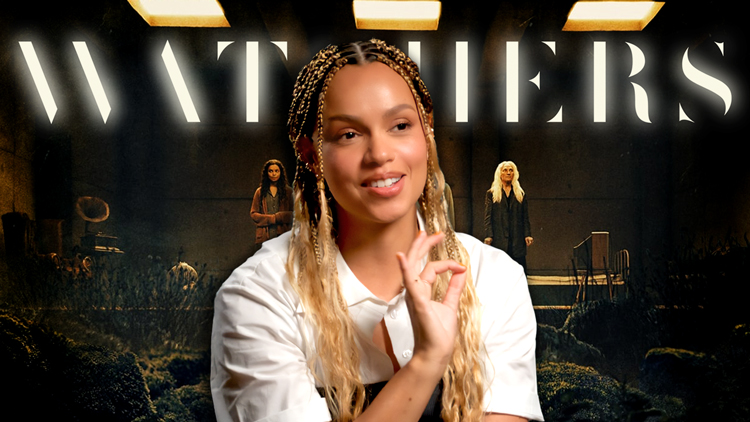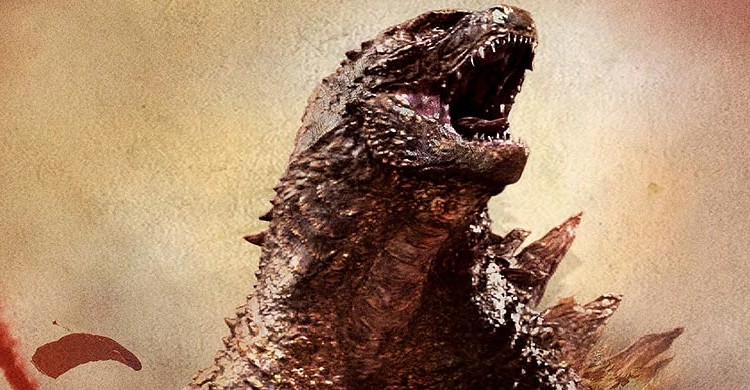By Jorge Carreon.
The curtain on the Summer Movie 2014 season is about to rise now that “Godzilla” is chomping at the bit for its global reveal. And, since Warner Bros. has lifted the review embargo, you can practically hear “First!” as scores of movie bloggers and fan boy reviewers race to post their comments online. In fact, reaction from this much pandered to sector of film writers at the first “Godzilla” screening in late April was so strong, I wondered if anyone was hired to wipe up the seats of the TCL Chinese Theater in Hollywood. “That sh*t was dope,” exclaimed one satisfied invitee. And I kept wondering, “Why don’t I feel the same?” In short, I merely liked what I really wanted to love. So, let’s start with the good news about Gareth Edwards’ (of “Monsters” fame) reverent and decidedly modern resurrection of Godzilla, one of the most enduring of creature feature stars.
After disaster maven Roland Emmerich turned this Atomic Age metaphor into a hypertrophied lizard with size issues in 1998, it seemed folly to try again. But Edwards’ instinct, along with those of screenwriter Max Borenstein, was wise in treating Godzilla as the definition of shock and awe. Taking their cue from such popcorn classics as Steven Spielberg’s “Jaws,” his entrance is a carefully orchestrated build to one hell of a moment that rivals that of the famed great white that terrorizes Amity Island or the first reveal of the dinosaurs of “Jurassic Park.” Sure it takes more than a few reels before it happens, but the first full sighting of Godzilla is a killer diller. It’s on par with witnessing the return of an old friend and the epitome of why we go to summer event movies in the first place.
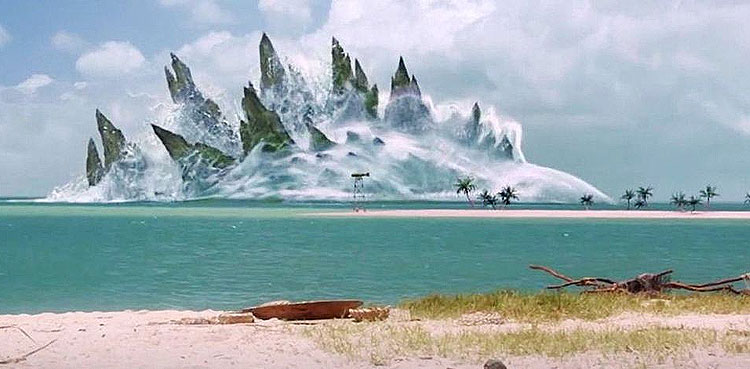
Much noise has been made about the design of Godzilla, but rest assured the King of Monsters is a near perfect hybrid of nostalgia and 21st century reinvention. (It worked for the fan boy contingent, cheering every instance where Godzilla roared or offered up his souped up powers.) More, Edwards was wise to not build a narrative around a monster smash where he merely runs amok with humanity helpless in its effort to defeat him. No, this “Godzilla” ups the stakes by giving him not one, but two powerful creatures that harken the memory of the famed Mothra in the process. (See “House of Cards?” Every monster has to meet its match to make it fun for the rest of us.)
The epic battles between this trio of unnatural foes bring plenty bang for every buck on screen. It’s hard not to cheer when Ken Watanabe utters, “Let them fight,” unleashing a visual Thunderdome that smashes the hell out such disparate locales as coastal Japan, Las Vegas and the eye-popping climax in San Francisco. Gorgeously filmed, designed and rendered by cinematographer Seamus McGarvey, production designer Owen Paterson & visual effects supervisor Jim Rygiel, and bolstered by an audio mix that is a sensory delight, technically this is the ideal “Godzilla” for its time. The film’s use of natural elements only bolsters the strange beauty of the film. In fact, it demands you see it in IMAX 3D. Yet, for all its sound and fury, something is curiously missing: a heartbeat.
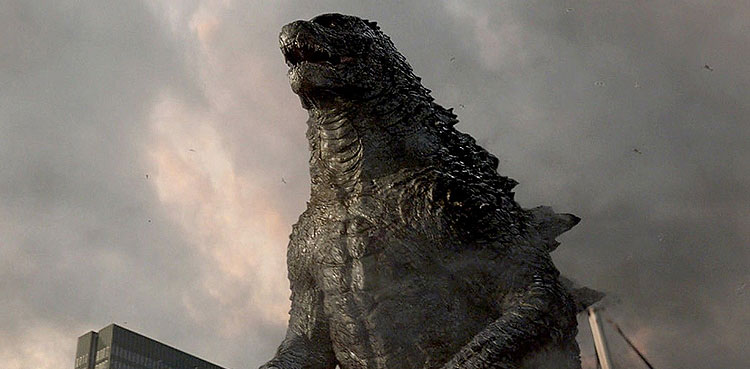
Now the bad news: Where “Godzilla” falters is in its human quotient. Sure, Edwards and Borenstein mined every Spielbergian trick in the Oscar-winner’s canon to excite us, almost to a fault. But they also failed to find room for emotion in the narrative to make us care about their large ensemble cast.
Two of the crucial mistakes made by Emmerich in 1998 was its erratic tone and a disjointed cast that all seemed to be in different movies. This time, “Godzilla” has an international pedigree of award-winning actors of every medium with such luminaries as Watanabe, Bryan Cranston, Juliette Binoche, David Strathairn and Sally Hawkins, plus the youthful sheen of rising stars Elizabeth Olsen and Aaron Taylor-Johnson trying to elevate what is still a monster movie. Yet, with the body count being what it is, some of these multi-faceted talents are not given much time to register beyond a face of twisted agony as they say goodbye before they even clear their throats. Worse, it is Taylor-Johnson, who has been given the task to anchor most of the film only to offer up a less than heroic performance as the character designed to be our hero. It is a woefully wooden performance framed by a series of stank faces that rival anything ever contributed by Kristen Stewart at her “best.”
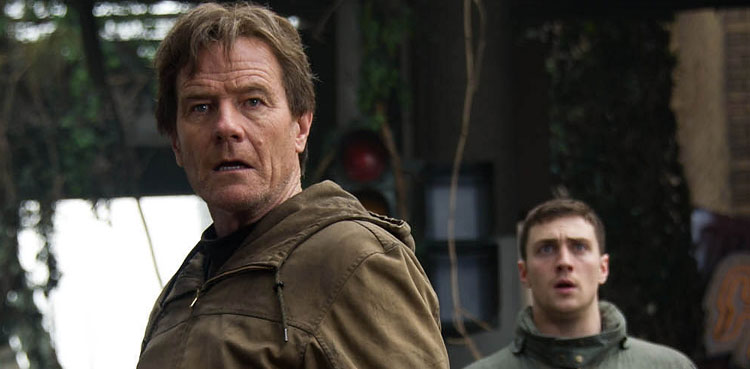
Believe it or not, this new Godzilla bears a twist in his motivation that I won’t reveal. Yet, you will notice how curious it is to have the creature exhibit more credible heart than his co-stars. Between the endless array of close-ups in an effort to milk any shred of emotion (cue the new drinking game) and Taylor-Johnson squeezed into a myriad of convenient plot twists; you start to love “Godzilla” substantially less. But what really rubbed my rhubarb was Edwards’ reliance on aping Spielberg, even his offensive use of children in peril to manipulate the audience.
If Edwards wanted to make a point, he should have taken his cues from Guillermo del Toro, who essays powerful takes on innocence lost (“Pan’s Labyrinth”) by the brutality of violence are visceral moments of psychology and even empowerment. Case in point in “Godzilla?” Placing a school bus packed with kids, including a lead character’s son, on the Golden Gate Bridge in the middle of a monster fight with the military comes across as a cheap plot point.
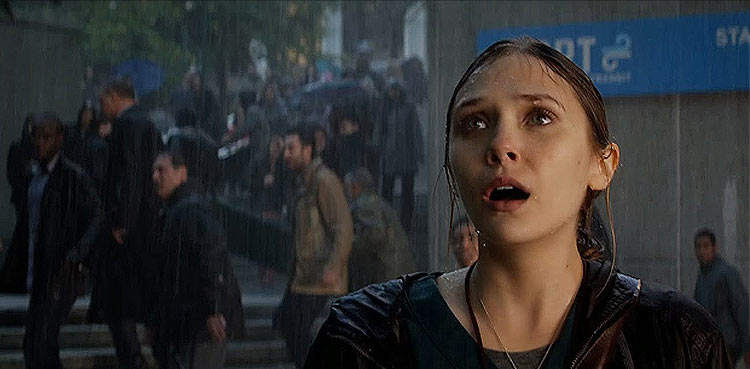
It is interesting to note how both Edwards and Borenstein were determined to infuse the film with a sense of consciousness about the world we live in. Again, here is where they should have taken notes from del Toro, who infuses the exceptional “Pacific Rim” with a sense of realism in a smashing opening sequence that defines the entire movie. Gone are the days of radioactive paranoia of the 1950s that marked the original “Godzilla.” We are a generation that’s lived through earthquakes ravaging and emptying communities near Japanese nuclear power plants, military battles fought on city streets and the decimation of landmarks by a terrifying “other.” If only they managed to do more than just offer visual cues to make us feel the same dread and awe when the world goes horribly wrong.
Is “Godzilla” an epic fail? No, because you can’t keep a good monster down. And besides, it remains a solid popcorn extravaganza that ushers in what could be the biggest summer on record. If anything, it all but obliterates whatever is left of the memory of Emmerich’s truly execrable take. But you can’t help but wonder what could have been, a phenomenon that’s all-too commonplace as greedy nostalgia continues to run the executive suites of Hollywood. Perhaps in “Godzilla 2” everyone gets a chance to make a monster impact and really roar on screen.
“Godzilla” opens nationwide on May 16 in cinemas and in IMAX 3D.




